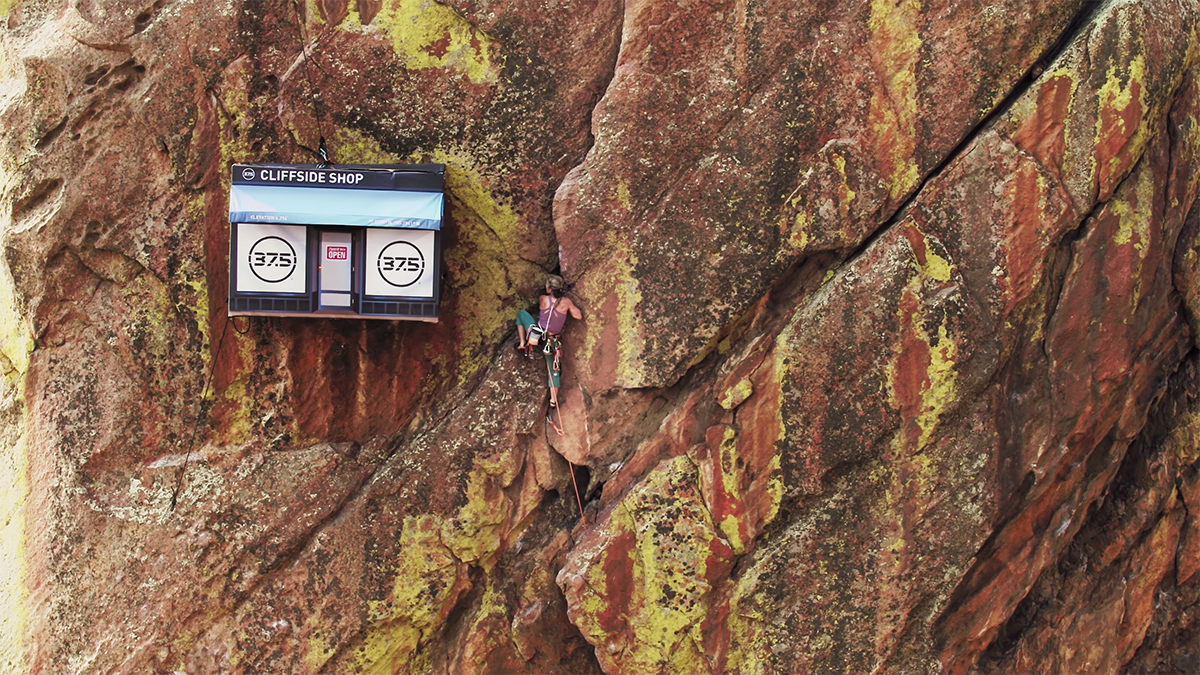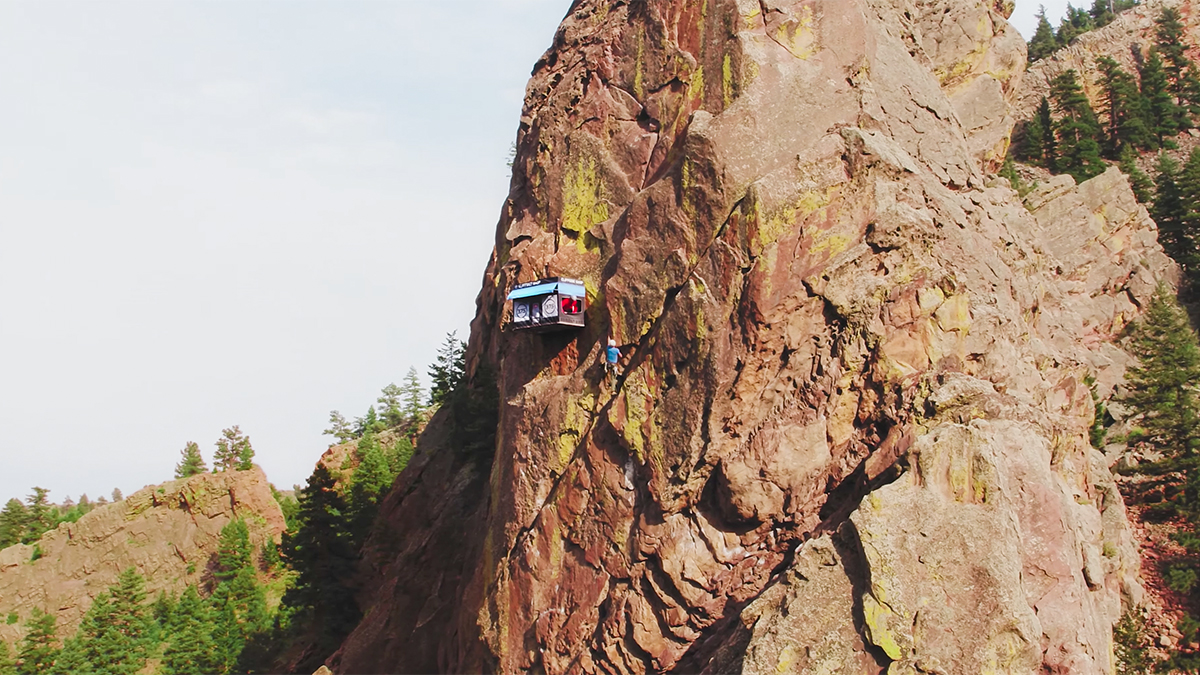We’re not above appreciating a good publicity stunt. This is especially true when it involves Colorado, rock climbing, and a pop-up shop impossibly clinging to a sheer rock wall 300 feet up in the air.
Last week, the aptly named Cliffside Shop briefly opened for business as “the world’s most remote pop-up shop.” Perched high on Eldorado Canyon State Park’s infamous Bastille outcrop, the store could only be reached by experienced climbers. Seventy hearty souls braved the Boulder icon’s notorious high winds, driving rain, and plummeting temperatures to reach the shop. Considering its location and Colorado’s unpredictable weather, that’s an impressive number.
All were personally greeted by smiling sales associate Dave Bywater, who sized them up mid-climb and recommended a jacket, pair of socks, or an extra fleece layer to fend off the inclement weather. The best part? The gear was completely free — provided, of course, that you could navigate the 300-foot rock face to get to the shop in the first place.
Bywater is a climbing ranger and vice president of 37.5 Technology, a company that creates custom textiles for other adventurewear companies. Their products are integrated into a wide array of big-name brands like Kenneth Cole, Adidas, and Carhartt. The patented technology incorporates a variety of materials, from activated carbon found in coconut shells to volcanic sand, into an innovative fabric that helps hardcore mountain climbers stave off body odor and maintain a core body temp of 99.5°F — or 37.5°C (get it?) — especially at altitude.
In an age of advertising when pop-up shops feel about as innovative as flash mobs, it’s increasingly difficult for brands to set themselves apart through publicity stunts, but 37.5 Technology nailed it on every front. Cliffside Shop was clever, visually amazing, and completely inline with the brand.
There was a philanthropic element as well. The company raised $15,000 to dole out to local outdoor clubs for climbing route improvements and club membership promotion, and to raise awareness for the increasingly contentious issue of public land preservation in the U.S. The fundraising proved so successful that the company is considering relaunching the Cliffside Shop in other, even more dramatic locations.






